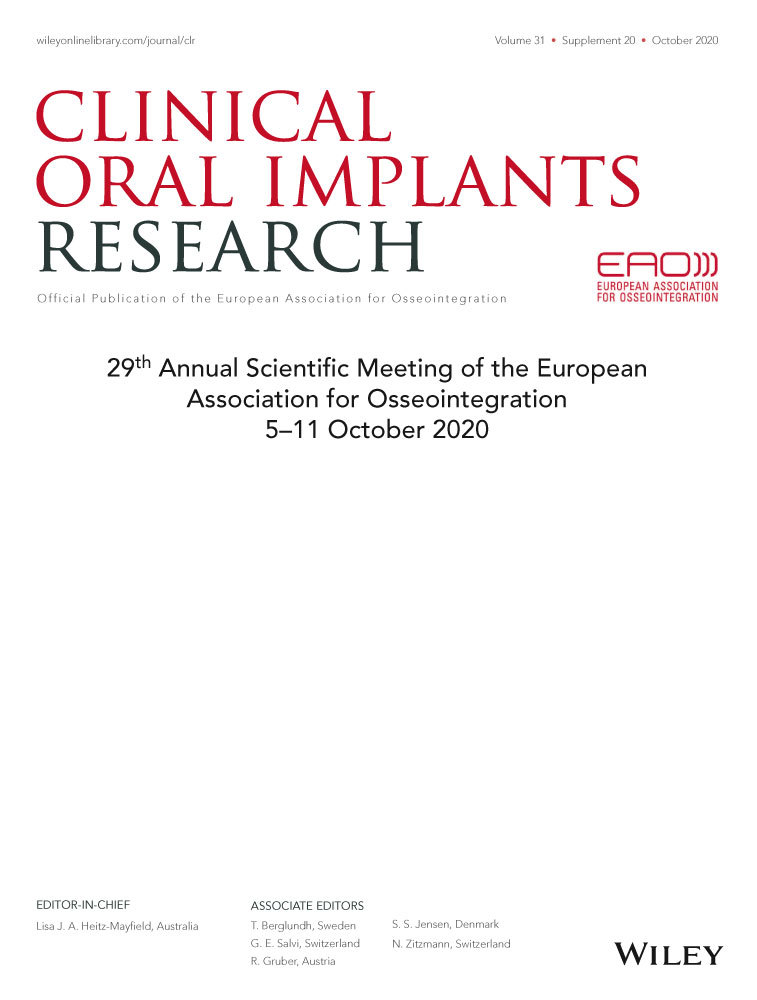The effect of ceramic reinforced polyether-ether- ketone (PEEK) abutments on peri-implant tissues: a randomized controlled clinical trial – preliminary data
7Y9VZ ePOSTER CLINICAL RESEARCH – PERI-IMPLANT BIOLOGY
Background: Poly-ether-ether-ketone (PEEK) a semi-crystalline linear polycyclic thermoplastic has been proposed as substitute for metals and ceramics in biomaterials. PEEK has recently also been introduced in implant dentistry as material for superstructures and implant abutments.
Aim/Hypothesis: The aim of this randomized clinical trial was to compare three different abutment materials - customized ceramic reinforced PEEK, titanium and zirconia abutments – and their effect on peri-implant tissue healing over an observation period of 3 years.
Materials and Methods: In this randomized clinical trial 60 patients are treated in three different treatment groups. A block randomization sequence was used to assign the abutments. Twelve weeks after implant insertion (baseline) all implants are restored with screw retained individual CAD/CAM abutments (ceramic reinforced PEEK n = 20, titanium n = 20, zirconia n = 20) and CAD/CAM designed High Impact Polymer Composite (HIPC) crowns. Assessments of bleeding on probing (BOP), plaque INDIAx (PI), probing depths (PD), recessions, technical complications and mean marginal bone levels are recorded after 0, 3, 6, 12, 24 and 36 months.
Results: So far, no significant differences (P > 0.05) in any of the evaluated parameters could be detected between the three different treatment groups.
Conclusions and Clinical Implications: Thus, it seems ceramic reinforced PEEK maybe a promising alternative material for the fabrication of dental implant abutments evolving comparable clinical short-term results as the standard materials titanium and zirconia. However long-term results are necessary for its final approval.
Acknowledgements: Erika Hafner, Claudia Gregorc
Keywords: Abutment, peri-implant tissue healing, MBL, PEEK




